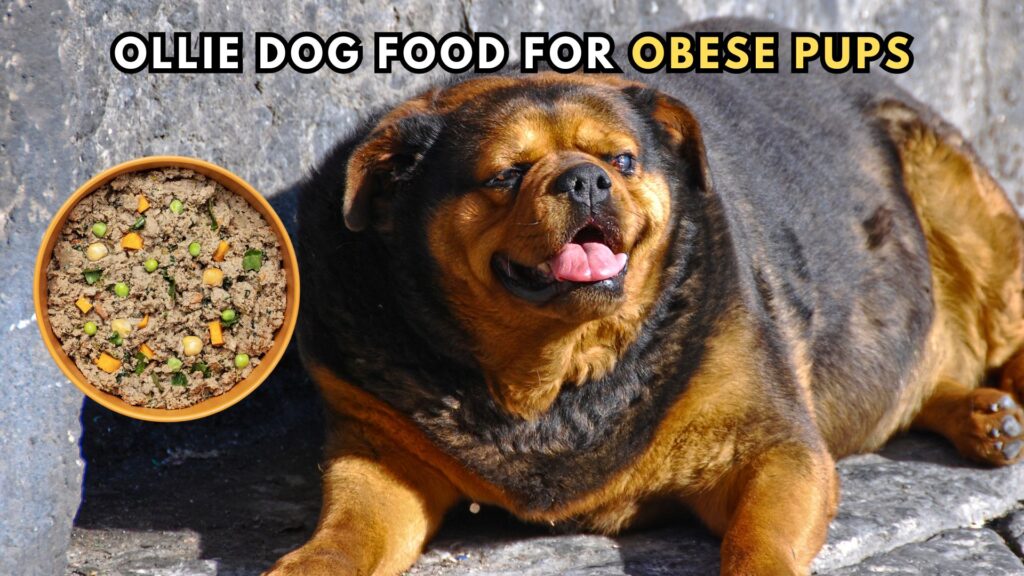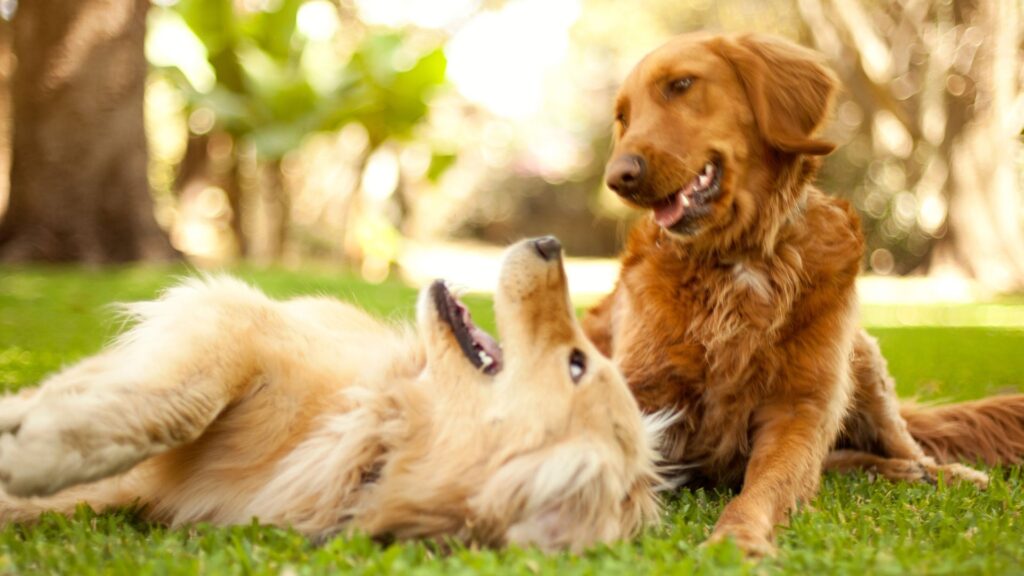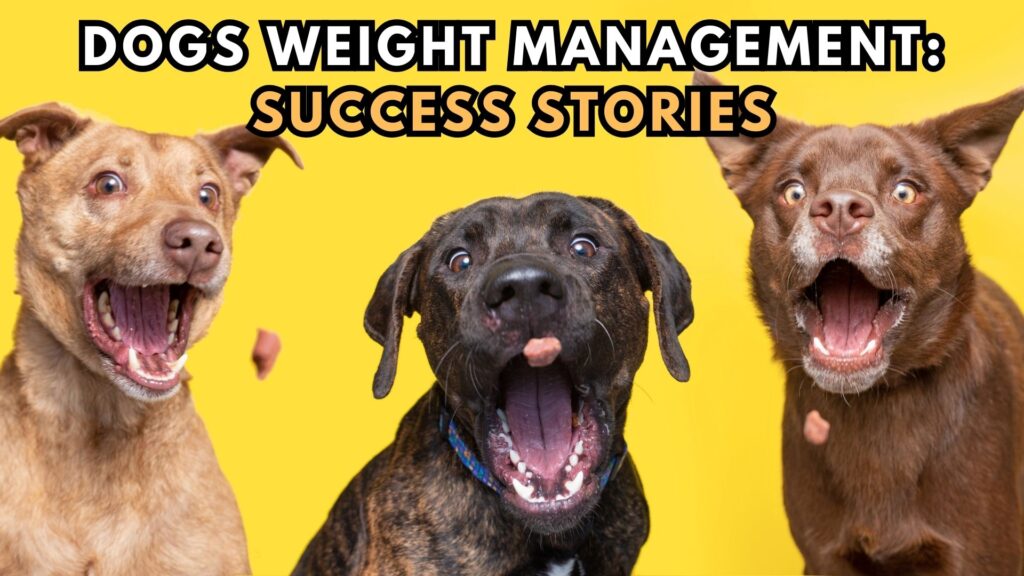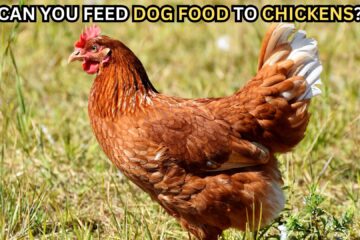Pet obesity has reached epidemic levels, with over half of all dogs in North America being classified as overweight or obese. This condition mirrors a similar crisis in the human population, highlighting the urgent need for pet owners to confront this challenge head-on.
Obesity in pets contributes to a myriad of other diseases and significantly shortens their lifespan.
The introduction of specific dietary solutions, such as Ollie dog food, offers a potential pathway to better health for obese pets.
This blog post aims to evaluate Ollie dog food’s role in managing obesity, including its benefits, risks, and potential side effects.

Understanding Obesity in Dogs
Causes of Obesity in Pets
The primary cause of obesity in pets is an imbalance between calorie intake and energy expenditure. Overfeeding, lack of exercise, and genetic predispositions are key contributors to this condition.
Health Risks Associated with Pet Obesity
Obesity in pets dramatically increases the risk of serious health issues, including diabetes mellitus, heart disease, various types of cancer, and joint damage leading to osteoarthritis.
The inflammation caused by excess fat, particularly the hormone leptin produced by fat cells, exacerbates joint pain and other obesity-related conditions.
Moreover, obesity can shorten a dog’s life expectancy by up to two years.
The Importance of Choosing the Right Dog Food
Selecting the right dog food is crucial for managing pet obesity. Diets should be tailored to the pet’s specific needs, focusing on weight management and nutritional balance.
Ollie dog food, with its emphasis on personalized meal plans and high-quality, whole-food ingredients, represents a tailored solution aimed at combating obesity.

The goal is to provide overweight dogs with a diet that not only aids in weight loss but also supports overall health and wellness.
The epidemic of pet obesity necessitates a comprehensive approach to dietary management. Ollie dog food offers a promising option for pet owners seeking to address their obese pets’ nutritional needs.
By focusing on the causes and health risks associated with pet obesity and the importance of choosing the right food, this blog post sets the stage for a deeper exploration of how Ollie dog food can benefit overweight dogs.
Tailored Nutrition for Weight Management
Ollie creates personalized meal plans based on a dog’s age, weight, breed, and activity level, ensuring that pets receive just the right amount of food, with no overfeeding or guesswork involved.
The meals include lean proteins, healthy fibers, and complex carbohydrates found in ingredients like lamb, chicken, turkey, carrots, rice, peas, and spinach.
These components help dogs burn fat, stay energized, and feel fuller longer, contributing to weight loss and improved metabolism.
Potential Health Improvements

Switching to Ollie Dog Food can lead to significant health benefits for overweight dogs. Not only can it help dogs reach their ideal weight, but it can also result in increased energy levels, improved coat and skin health, and better digestive health.
Ollie’s recipes are crafted to support various aspects of a dog’s health. The fresh, human-grade ingredients used in Ollie Dog Food are minimally processed to preserve their nutritional integrity, offering benefits such as stronger immunity and better coat health.
The convenience of having meals delivered directly to pet owners’ doors also adds to the appeal of this service.
Success Stories and Case Studies
The effectiveness of Ollie Dog Food for weight management is evident in the success stories of pets like Lupin, Remi, and Gannon.

These stories showcase how Ollie has helped dogs not only lose weight but also address other health issues such as allergies, chronic pain, and low energy levels.
The combination of lean proteins, vegetables, fruits, and other nutritious ingredients in Ollie’s recipes contributes to these positive outcomes, demonstrating the brand’s commitment to canine health and well-being.
Remember, a fresh diet like Ollie’s can improve a dog’s digestion, energy levels, and even extend their lifespan by up to 2.5 years compared to dogs fed commercial, canned dog food.
This aligns with research suggesting that a diet rich in fresh, nutrient-dense ingredients can have a profound impact on a dog’s health and longevity.
Evaluating the Risks and Side Effects
When transitioning to Ollie Dog Food, it’s important to consider both the potential risks and side effects, as well as the steps for integrating Ollie into your dog’s diet effectively.

Understanding the Adjustment Period
Transitioning your dog to a new diet, such as Ollie, should be done gradually to avoid digestive distress.
An abrupt change in diet can lead to gastrointestinal issues, including vomiting and diarrhea, as the dog’s digestive system needs time to adapt to the new food.
If your dog has a specific allergy or is on a veterinarian-prescribed diet, it’s crucial not to change their diet without consulting your vet first.
Recognizing Signs of Dietary Incompatibility
During the transition, monitor your dog for any signs of distress or adverse reactions, such as abnormal stool, vomiting, or loss of appetite.
These symptoms could indicate dietary incompatibility. It’s essential to consult your veterinarian if you observe any of these signs persisting, as they could signal an underlying issue that may require professional attention.
Integrating Ollie into Your Dog’s Diet

Transitioning to Ollie Dog Food
A slow and steady transition is key to ensuring your dog’s digestive system adjusts without issues.
Start by mixing 25% of Ollie with 75% of your dog’s current food for the first few days, gradually increasing the proportion of Ollie over a 7 to 10-day period until you’re serving 100% Ollie.
Some dogs might need more time to adjust, so be prepared to extend the transition period if necessary.
Monitoring Your Dog’s Weight Loss Journey
Regular weigh-ins and close monitoring are crucial when your dog is on a weight loss plan with Ollie.
Adjust meal portions based on your dog’s progress and activity level, aiming for a gradual weight loss that doesn’t compromise their overall health or energy levels.
Always consult with a veterinarian to tailor the diet plan to your dog’s specific needs, ensuring they receive all the necessary nutrients while on their weight loss journey.
It’s also worth noting that transitioning to a fresh food diet like Ollie can bring numerous benefits beyond weight management, including improved digestion, energy levels, and even an extension of your dog’s lifespan by up to 2.5 years compared to those fed commercial diets.
High-quality, whole-food ingredients in Ollie’s recipes provide a balanced diet that supports overall health.
Remember, every dog is unique, and their reaction to a new diet can vary. Listening to your dog and observing their response to the diet change is vital.
When in doubt, seeking advice from your veterinarian is always the best course of action to ensure the health and well-being of your furry friend.
FAQs
Can Ollie dog food help my dog lose weight safely?
Yes, Ollie’s approach to weight loss in dogs involves providing meals that are rich in lean proteins, fibers, and complex carbohydrates, which help dogs burn fat, stay energized, and feel fuller longer.
Their meal plans are customized based on the dog’s specific needs, ensuring safe and effective weight management.
How long does it take to see weight loss results?
The timeline for seeing weight loss results can vary depending on the dog’s initial condition, adherence to the feeding plan, and overall lifestyle, including exercise.
Ollie’s success stories indicate significant weight loss achievements, but individual results will vary.
Continuous monitoring and adjusting the meal plan as necessary are key to achieving the desired weight loss outcome.
Are there any breeds that should avoid Ollie dog food?
Ollie’s recipes are designed to cater to dogs of all breeds and sizes, focusing on delivering balanced and nutritious meals.
However, dogs with specific health conditions or dietary restrictions should consult with a veterinarian before making any diet changes, to ensure the chosen diet meets their unique health needs.
How do I adjust portions for my overweight dog?
Ollie provides precisely portioned meals tailored to your dog’s age, weight, breed, and activity level to prevent overfeeding.
If your dog is overweight, it’s important to follow the portion guidelines provided by Ollie and adjust as necessary based on your dog’s weight loss progress and veterinary advice.
Monitoring your dog’s weight and condition regularly will help you determine if portion adjustments are needed.
Summary
Choosing Ollie Dog Food for overweight pets offers a blend of benefits and considerations. The personalized meal plans, high-quality ingredients, and focus on whole-food recipes support safe weight loss and overall health improvements.
However, it’s crucial to take a proactive approach by consulting with a veterinarian to tailor Ollie’s diet to your pet’s specific needs, ensuring they receive optimal nutrition while achieving a healthy weight.
For more on incorporating healthy treats into your dog’s weight loss journey, consider DIY treats with nutritious ingredients like pumpkin puree and lean meats, which can complement the diet plan without derailing weight loss efforts.


